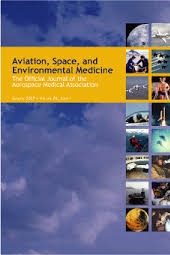Introduction:
Hypoxic incapacitation continues to be a significant threat to safety and operations at high altitude. Noninvasive neurocognitive performance testing is desirable to identify presymptomatic cognitive impairment, affording operators at altitude a tool to quantify their performance and safety.
Methods:
There were 25 subjects enrolled in this study. Cognitive performance was assessed by using the King-Devick (K-D) test. The performance of the subjects on the K-D test was measured in normoxia followed by hypoxia (8% 02 equivalent to 7101 m) and then again in normoxia.
Results:
K-D test completion time in hypoxia for 3 min was significantly longer than the Baseline Test (54.5 +/- 12.4 s hypoxic vs. 46.3 +/- 10.4 s baseline). Upon returning to normoxia the completion time was significantly shorter than in hypoxia (47.6 +/- 10.6 s post test vs. 54.5 +/- 12.4 s hypoxic). There was no statistically significant difference between baseline test and post test times, indicating that all subjects returned to their normoxic baseline levels. SpO2 decreased from 98 +/- 0.9% to 80 +/- 7.8% after 3 min on hypoxic gas. During the hypoxic K-D test, SpO2 decreased further to 75.8 +/- 8.3%.
Conclusions:
In this study the K-D test has been shown to be an effective neurocognitive test to detect hypoxic impairment at early presymptomatic stages. The K-D test may also be used to afford a reassessment of traditional measures used to determine hypoxic reserve time.
Summary Points:
- The performance of 25 subjects on the K–D test was measured in normoxic conditions followed by hypoxic conditions (8% O2 equivalent to 7101 m altitude) and then again in normoxia.
- K–D test time after exposure to 3 minutes of hypoxia was significantly longer than baseline.
- After returning to normoxia, the K-D time was significantly improved compared to hypoxic performance.
- There was no statistically significant difference between baseline test and post-test times.
- The K–D test may be used to detect hypoxia at early pre-symptomatic stages.

